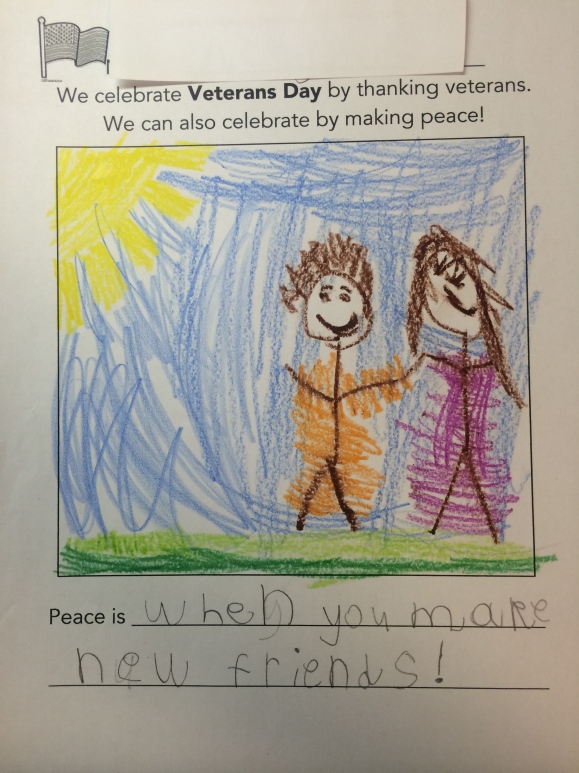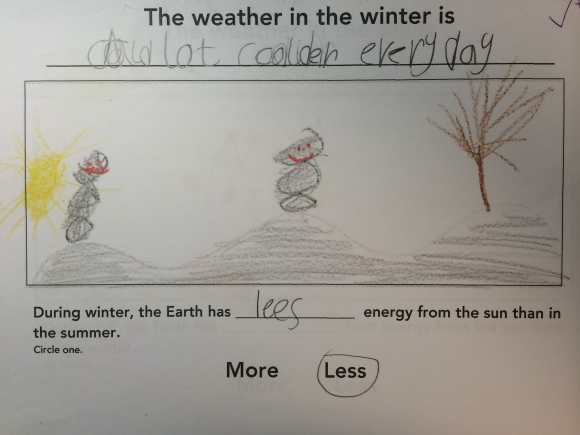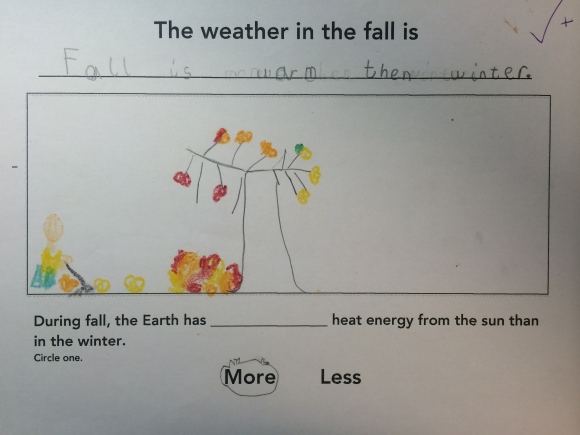Integration is a key skill for teachers to be able to demonstrate in a classroom setting. With the high stakes in education as well as increasing emphasis on educational standards, integration is the perfect way for teachers to ‘cover all the bases’ at once. Integration with literature allows teachers to engage children in reading concepts while also covering concepts from social studies, science, and even math. Integration will be a necessary component in every classroom as teachers work to educate well-rounded individuals using lessons driven by the standards and authentic learning. Integration is easy to do with thoughtful planning, and it is one of my favorite ways in which to educate children!
Evidence 1: The Peace Book Lesson (Multi-Cultural)
This evidence is an artifact from a lesson I did with children using Todd Parr’s The Peace Book as inspiration. The children and I were talking about the idea of Veteran’s Day. When Eisenhower called for Veteran’s Day to be recognized, he also urged Americans that Veterans Day should serve as a reminder to always be seeking and creating peace. I used The Peace Book to talk with children about the idea of peace. This book also visits multi-cultural topics such as the idea that peace is “everyone wearing what they want to wear”. Parr’s illustrations allowed us to have an authentic conversation about people who might dress differently than we do due to religious beliefs or personal preferences. Children also detailed their thoughts on peace through this assessment, modeling their responses after Parr’s model of “Peace is…”
Evidence 2: Science 5E Integration (Differentiation)
Evidence 2 is a photo of an assessment used after the literature integration of weather by using Gail Gibbon’s The Seasons of Arnold’s Apple Tree. I was able to use this text for enjoyment with the students. After, we were able to go back through the book and make observations about the seasons using knowledge we had gained by learning about weather for the week. Because of this text and its illustrations, we were able to talk about the typical weather in the seasons, how the weather affects what we wear outside, and what a tree would look like outside during a particular season. Children were then given a reflection to complete; these reflections were differentiated based on the children’s achievements throughout the week. The reflections were also differentiated for English Language Learners who were given a word box as necessary as well as struggling readers and writers who were brainstormed with verbally before recording their thoughts.


